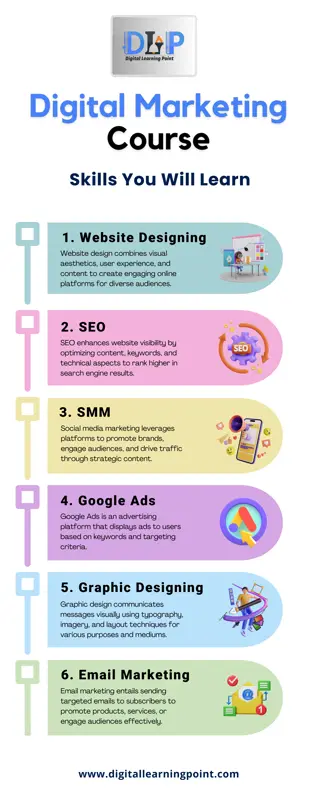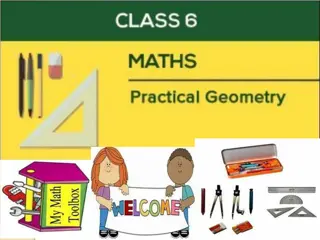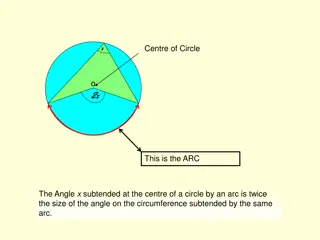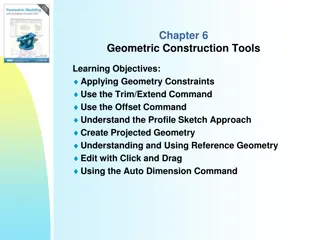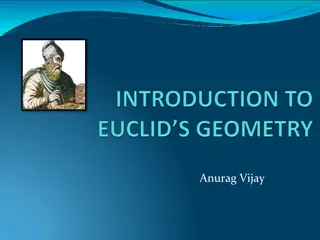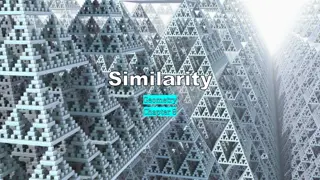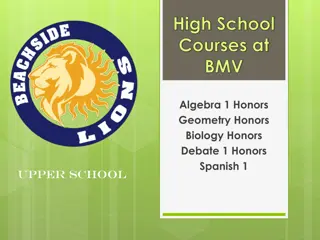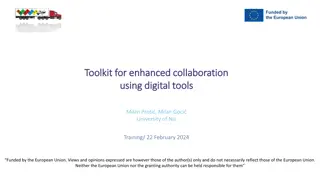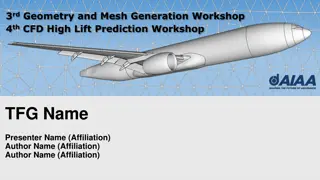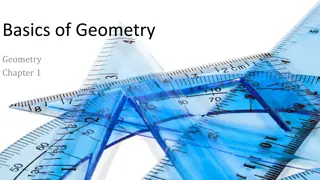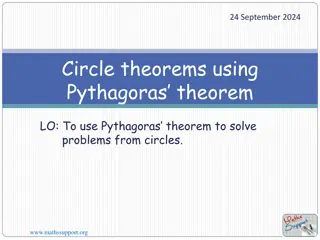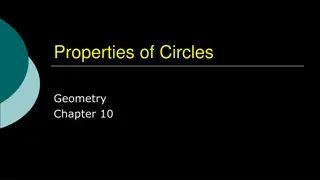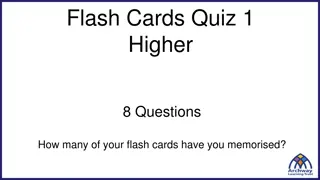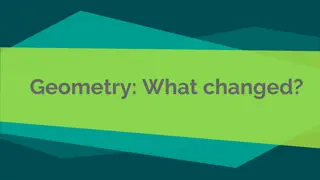Understanding the Impact of Digital Tools on Geometry Learning
This study explores how digital tools influence students' learning of geometry through an interactive online course developed by The Center for Educational Technology. The course focuses on concept development, tool utilization, and cognitive paths in geometry education. Research findings emphasize the importance of technology in aiding students in constructing abstract mathematical knowledge. Specific stages of definition construction, illustrated with the example of a kite, are detailed, shedding light on the process of concept consolidation in problem-solving scenarios.
Download Presentation

Please find below an Image/Link to download the presentation.
The content on the website is provided AS IS for your information and personal use only. It may not be sold, licensed, or shared on other websites without obtaining consent from the author. Download presentation by click this link. If you encounter any issues during the download, it is possible that the publisher has removed the file from their server.
E N D
Presentation Transcript
Kouropatov, Ovodenko & Hershkovitz CADGME 2016 The impact of digital tools on students' learning of geometry Anatoli Kouropatov, Regina Ovodenko & Sara Hershkovitz The Center for Educational Technology (CET) Israel 1 CADGME 2016
The story The Center for Educational Technology (CET) developed a one-year course devoted to the subject of studying geometry using an interactive online geometry environment. The course includes all necessary study material according to the curriculum for the ninth grade. The course is rich with activities, demonstrations, tools and dynamic labs (Geogebra's applets), allowing exploration of ideas. Kouropatov, Ovodenko & Hershkovitz CADGME 2016 The design of the course is based on blended instruction (Horn & Staker, 2015) and includes different didactic elements like individual work, work in groups, classroom discussions, flip-lessons, etc. The teacher can track student performance. We also used this course for teaching pre-service teachers who specialize in teaching mathematics in middle school. 2
Students' learning of definitions Kouropatov, Ovodenko & Hershkovitz CADGME 2016 In this course, we were expecting students to develop skills with using a certain technology tool, while developing mental images coherent with the mathematical concepts (Hershkowitz, R., 1988) that we strive to teach them - in this case "geometry definition, geometry proof, and geometric construction." 3
The questions: 1. How does the process of concept definition construction occur in a student's mind? What is the cognitive path from concept image to concept definition? Kouropatov, Ovodenko & Hershkovitz CADGME 2016 2. What are the tools students use on the path and how do they use these tools in an interactive dynamic environment? 4
What do we know from research? 1. Geometrical concepts are specific ones figurative concepts (Fischbein, 1995). Kouropatov, Ovodenko & Hershkovitz CADGME 2016 2. Students well-known difficulties with learning geometry can be theorized using Concept Image Concept Definition theory (Tall, & Vinner, 1981). 3. The professional literature indicates that combined mathematics teaching technology tools help in the process of constructing an abstract knowledge of mathematics, and geometry in particular (Jones, 2002; Lagrange, J.B. et al., 2003). 5
Definition construction: Case of Kite We identified three stages of the process of the construction of this definition: Kouropatov, Ovodenko & Hershkovitz CADGME 2016 Stage 1: Initial experience of defining. Stage 2: Attempting to define well. Stage 3: Using the definitions in problem solving with the purpose of consolidating the concept. 6
Stage 1: Initial experience of defining The activity (dynamic): To build a quadrilateral and to describe its properties: Kouropatov, Ovodenko & Hershkovitz CADGME 2016 1. Kite: two pairs of equal sides; two opposite equal angles; diagonal AB bisects angels A and B; diagonals are perpendicular to each other. 2. Square: four equal sides; angle of 90 ; diagonals are equal . 3. Parallelogram: opposite sides are equal; opposite angles are equal; diagonals bisect each other. 4. Rectangle: all opposite sides are parallel and equal; all angles are right and hence equal; diagonals are equal by their lengths. 7
Stage 2: Attempting to define well The activity (static and dynamic): For each one of the figures answer: Is it definitely a kite? Yes or No Explain your decision. Kouropatov, Ovodenko & Hershkovitz CADGME 2016 8
Stage 2: Attempting to define well From students works: examples of correct answers Arguments: Here it is not necessary that adjacent sides are equal. The opposite sides are equal Kouropatov, Ovodenko & Hershkovitz CADGME 2016 Indeed, there are two congruent triangles, but adjacent sides are not equal The are two different pairs of adjacent equal sides It seems like a square but it isn t a square - its sides are not equal. It s a kite because adjacent sides are equal and the triangles are congruent 9
Stage 2: Attempting to define well The activity (dynamic): For each of the figures, determine: It is definitely a kite; It could be a kite; It is definitely not a kite. Explain your decision. Kouropatov, Ovodenko & Hershkovitz CADGME 2016 10
Stage 2: Attempting to define well From students works: examples of wrong answers Answer: It is definitely not a kite Kouropatov, Ovodenko & Hershkovitz CADGME 2016 Arguments: It doesn t suit the definition. The adjacent sides should be equal not opposite sides. It s a parallelogram. Answer: It could be a kite Arguments: It s made of four equal sides. It could be a rhombus or square hence it could be kite because both of them have pairs of equal adjacent sides. 11
Stage 3: Using the definitions in problem solving with the purpose of consolidating the concept The activity (dynamic): Why is this quadrilateral definitely not a kite? You can use construction to help you. Kouropatov, Ovodenko & Hershkovitz CADGME 2016 12
Conclusions 1. How does the process of concept definition construction occur in a student's mind? What is the cognitive path from concept image to concept definition? Kouropatov, Ovodenko & Hershkovitz CADGME 2016 2. What are the tools students use on the path and how do they use these tools in an interactive dynamic environment? 13
anatoliko@gmail.com reginao@cet.ac.il




